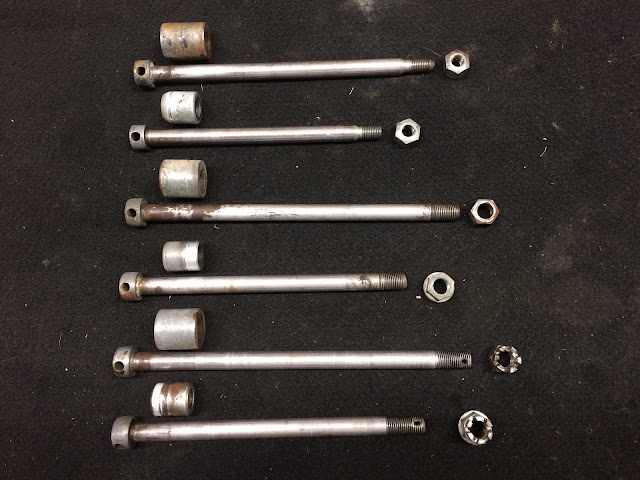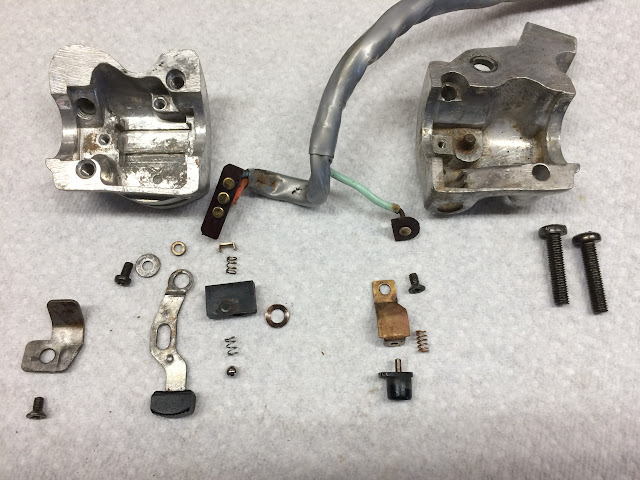CT90 and CT200 Axle Information

When I was working on some of my first CT90's and buying parts off of eBay I ended up buying axles that were not correct for the bike because the eBay ad descriptions weren't always clear and I at the time really didn't understand that there were differences in the axles between the various years of CT90's and CT200's. Since I have a bunch of parts setting around from previous project bikes, I thought I would share a few photos and a little info to help someone else trying to pick up the correct axle for their CT90 project. If I missed something with the info I am providing below, please feel free to comment. From what I have seen CT90 axles can be broken into three groups: CT200's, early CT90's K0 thru K1, and everything K2 and on. Here is a picture of the three groups of axles with the CT200 axles at the top of the photo, the K0 to K1 in the middle, and the K2 and on on the bottom. The rear axle is the top axle in each group and I have also included
